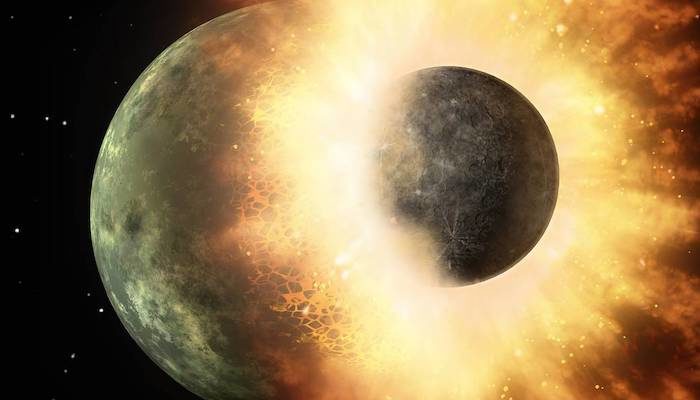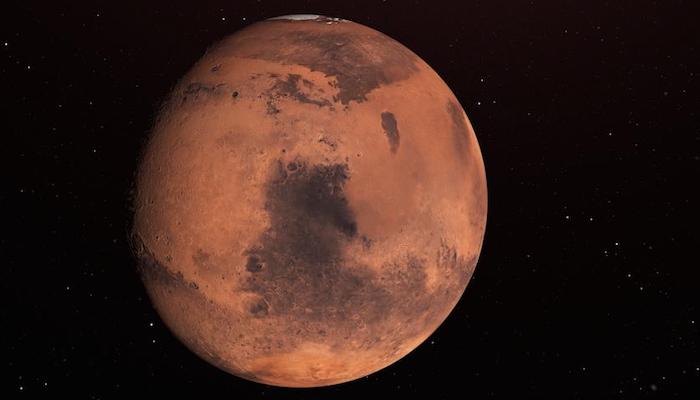In this week’s blog post, we will learn more about the past of our neighbouring planet Mars. Kar Wai Cheng, PhD student at the Institute of Geophysics at ETH Zurich, is talking about the Martian dichotomy and how it could have formed. Humans have recognized Mars for a very long time. One of the earliest records of Mars is seen on a skymap in the tomb of an ancient Egyptian astronomer. By tha ...[Read More]
What happens when two worlds collide?
Why does the Moon have a very small core and Mercury one that makes up roughly 85% of the planet’s radius? Why are humans doing research in geoscience and not some evolved version of dinosaurs? In this week’s blog post, Harry Ballantyne, PhD student at the Department of Space and Planetary Sciences at the University of Bern, is talking about large-scale collisions and how they can answ ...[Read More]
InSights into Mars’ interior
This week Ana-Catalina Plesa, Junior Research Group Leader at the German Aerospace Centre (DLR) in Berlin/Germany takes us on a journey to Mars. Enjoy the read about how spacecraft observations and numerical models provide InSight into the deep enigmas of the “red planet”. Over the course of its evolution, Mars has accumulated heat in its interior arising from the planet’s formation, differentiati ...[Read More]
The Moon – A small but significant tale about impacts, basins, volcanism, and time

This week on the GD Blog we are taking a magical geodynamicist’s mystery tour to our planet’s Moon thanks to Tobias Rolf, Researcher at the Centre for Earth Evolution and Dynamics (CEED) at the University of Oslo, Norway (currently a Visiting Researcher at the Institute of Geophysics at the University of Münster, Germany). Imagine you are orbiting the Earth at an altitude of a few hun ...[Read More]



